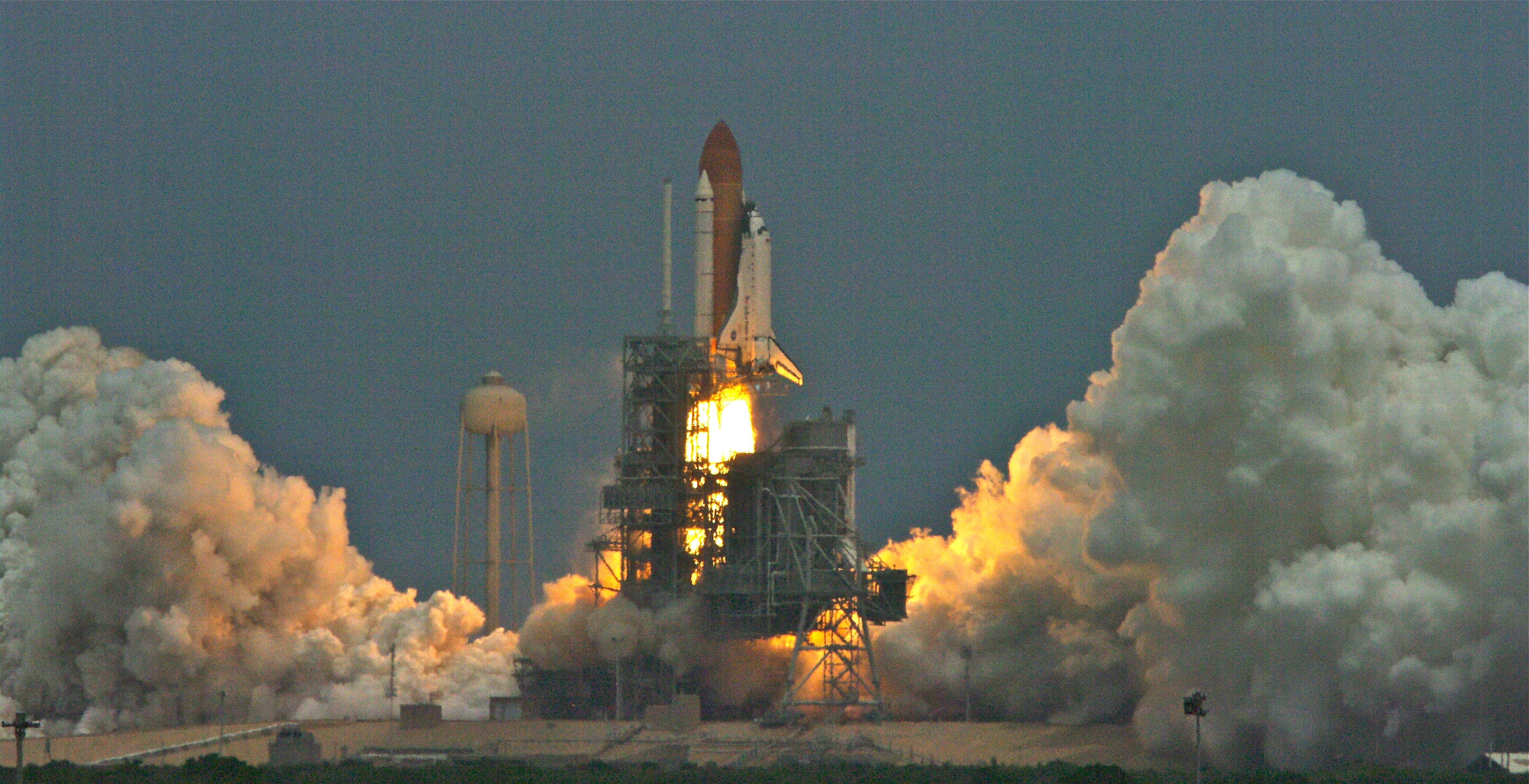This content has been archived. It may no longer be relevant

May 11th, 2009 Shuttle STS-125 Atlantis roared into space from the Kennedy Space Center for the final Hubble Servicing Mission. On board were a myriad of instruments to keep the Hubble Space Telescope working well into the future.
Space Shuttle Atlantis carried two new instruments to the Hubble Space Telescope, the Cosmic Origins Spectrograph and the Wide Field Camera 3. The mission also replaced a Fine Guidance Sensor, six gyroscopes, and two battery unit modules to allow the telescope to continue to function at least through 2014.[3][7]The crew also installed new thermal blanket insulating panels to provide improved thermal protection, and a soft-capture mechanism that would aid in the safe de-orbiting of the telescope by an unmanned spacecraft at the end of its operational lifespan.[NASA 5][8] The mission also carried an IMAX camera with which the crew documented the progress of the mission for the Hubble IMAX movie.[NASA 6]
The mission was intended to extend the life of Hubble at least another five years and today we celebrate the 8 year anniversary. All instruments are working well and continue to return great science as well as the fantastic pictures we have come to love.
Our Space Sciences Lab and UC Berkeley have more links to the Hubble Space Telescope and its marvelous history. SSL’s current Lab Director Dr. Steven Beckwith has been a Director of the Space Telescope Science Institute (Baltimore, Maryland), 1998-2005, prior to coming to UC Berkeley in 2008 and is now at the Space Sciences Lab.
In 2002 Dr. Beckwith drew up plans for one of Hubbles’ most ambitious missions. Findingn galaxies shortly after the Big Bang. Dr. Beckwith planned to use Hubble to find the first galaxies created. This required an upgrade to the Hubble Space Telescope and the instrument to do that is called ACS or Advanced Camera for Surveys. On 3/1/02 SM3b STS-109 launched to install the ACS. Most Hubble observation last from hour to a couple of days, but the observations undertaken by Hubble and ACS encompassed two observing segments. Each observing segment lasted 40 days and 40 nights. The longest aggregate observation to date. The Ultra Deep Field Image is not a flat field but a 3D image of rendering of the universe. The oldest galaxy found is from 12.6 Billion Light Year ago or near the “Dawn of Galaxies”. This mass of stars was not the typical disk or spiral galaxy but more a blob of stars without form.
A team of astronomers from UC Berkeley and other institutions, in their quest to reduce uncertainty about the expansion rate of the universe, has uncovered evidence that the universe is expanding faster than previously predicted.The second link to UC Berkeley is a team, which was headed by Adam Riess of the Space Telescope Science Institute and included UC Berkeley campus astronomy Professor Alex Filippenko, The team took the most precise measurements of the expansion rate of the universe to date and concluded that the universe is now expanding 5 to 9 percent faster than previous predictions indicated.
Searching for exploding stars: Riess and Filippenko looked for exploding stars, super novae that can help determine the expansion history of the universe. Land based telescopes were used to find the super novae and then the same galaxies were looked at by the Hubble Space Telescope. The observations showed that the universe was not slowing down but in fact it was accelerating, partly due to the effects of dark energy. This helped to reshape the future of the cosmos. This team used Hubble every 45 days or so to look at the same patch of sky to determine the change in the universe in that patch of sky. The new measurements were finding that Dark Energy was a driving factor in the expansion of the universe.
Watch the landmark program from the Science Channel, Hubble: 30 Years of Discovery

